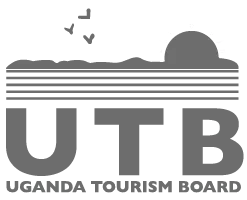Ngorongoro Safari
Ngorongoro Crater Safari
This protected region also includes part of the Serengeti Plains and the old volcanoes of the Ngorongoro Highlands, near the famous Great Rift Valley. The first time you look down into the crater from the rim is an unforgettable moment. The scene is full of green plains, small lakes, forests, and swamps, all surrounded by steep cliffs. It looks like a hidden world where nature lives freely. One of the most exciting things about a Ngorongoro Crater Safari is the chance to see all of the Big Five animals—lions, leopards, elephants, buffaloes, and the very rare black rhino—in just one game drive. The crater is also known for having the highest number of lions in Africa.
Flamingos gather at Lake Magadi, a shallow soda lake on the crater floor, while hippos enjoy the cool water and many birds fly across the sky. The animals stay in the crater year-round because of the walls that keep them safe and the easy access to food and water. A Ngorongoro Crater Safari is often combined with a visit to the Serengeti National Park, but even on its own, it’s a dream destination. The mix of amazing wildlife, rich history, and stunning views makes it one of the best safari experiences in the world. Every moment in the crater feels like a scene from a nature movie, and the memories will stay with you forever.
Best Ngorongoro Crater Safaris
Reasons To Visit Ngorongoro Crater
Location And Creation
The Ngorongoro Crater lies within the Ngorongoro Conservation Area, a vast 8,000 square kilometer region filled with forests, open grasslands, and rolling hills. Even though the crater itself covers only 260 square kilometers, it is the main attraction. If you’ve ever taken a game drive across the crater floor or stood at the rim and watched sunlight break through the clouds to light up parts of the land below, you’ll know why it draws so much attention. It’s a truly breathtaking site. The Ngorongoro Crater is the world’s largest unbroken and unflooded volcanic caldera. A caldera forms after a volcano erupts. The eruption empties out the magma inside, leaving a large hollow space beneath the volcano. Without support, the top of the volcano collapses inward, but the lower walls of the cone stay standing. This dramatic event happened millions of years ago, and today, it has become one of the most stunning places for wildlife viewing in all of Africa.
Game Drives
Most game drives begin at the top of the crater, where lodges are located. From there, vehicles follow a steep, winding road down the inner walls to reach the crater floor. At first, you may not realize just how special the experience is. But once you’re driving across the wide, open plains and look up to see the high crater walls all around you, it becomes clear—you’re inside a natural bowl, completely surrounded. The scenery is dramatic, but the real stars are the animals. Because the crater floor is mostly flat, spotting wildlife is often easier here than in other parks. It’s estimated that around 30,000 large animals live inside the crater. Predators like lions, cheetahs, leopards, hyenas, and jackals hunt here, while buffalo, zebra, and wildebeest graze on the rich grass. You might even spot the rare black rhino or see elephants moving between the forests on the crater slopes. All this makes Ngorongoro Crater one of the best places to see the “Big Five” in one area.
One animal you won’t see here, however, is the giraffe. The crater’s steep walls are believed to be too difficult for giraffes to climb down, so they stay in the surrounding areas. Most other animals could leave if they wanted to—but many choose to stay, enjoying the food and water all year round. Unlike many parks that have better wildlife viewing only in certain seasons, the Ngorongoro Crater offers excellent game drives throughout the year. Still, if you visit between December and March, you’ll see even more animals as the Great Wildebeest Migration brings hundreds of thousands of animals to the nearby plains in the northwest of the conservation area.
The Great Migration
Driving from the rim of the Ngorongoro Crater down to the grassy plains of Ndutu is an unforgettable experience—especially when the Great Migration is in the south. Around 1.5 million wildebeest and zebra gather on the rich grasslands to give birth to their young and regain their strength before starting their long journey north in search of fresh grass. As you leave the high crater rim and drive down the outer slopes of the volcanic hills, the landscape changes a lot. You drop almost 1,000 meters in height before reaching the wide-open plains. From far away, the plains seem to be covered in large moving shadows, as if dark clouds are passing over the land. But as you get closer, you realize they aren’t shadows at all—they’re huge herds of wildebeest and zebra, stretching as far as the eye can see. Predators like lions and hyenas stay close to the edges of the herds, waiting for the right moment to attack. They often target the weak, young, or injured animals, picking them off when the opportunity comes.
Additional activities
North of the Ngorongoro Crater, the green hills continue toward Olmoti Crater and then across the Bulbul Depression to Empakaai Crater in the northeast. This part of the conservation area is quiet, untouched, and free from many lodges or camps. Only the traditional Maasai communities live here. This peaceful setting gives you the chance to do more than just game drives. You can meet and learn from the local Maasai people, take scenic walks through the highlands, and enjoy a deeper connection with the land, wildlife, and culture of Ngorongoro.
Our Trusted Partners






